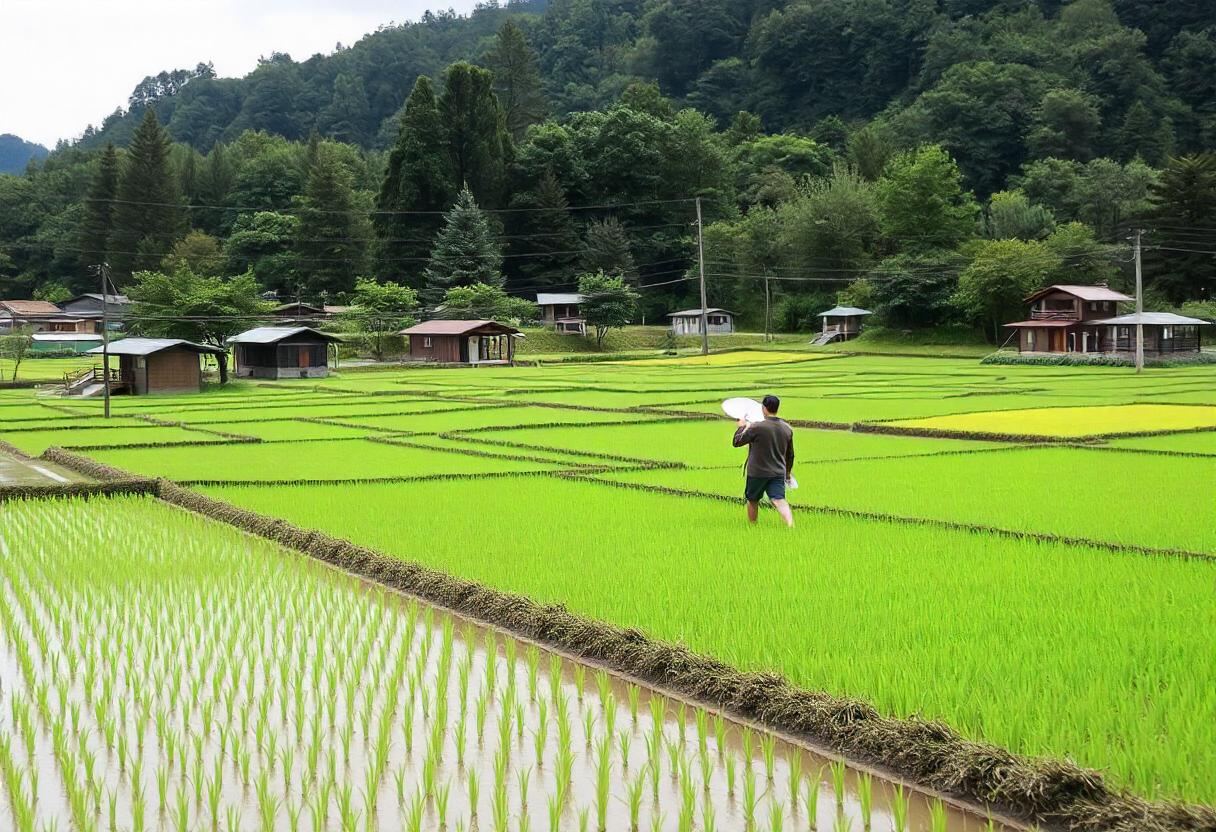
Historical Background
Agriculture in Japan has a long and rich history, deeply intertwined with the country’s cultural and economic development. Traditionally, Japanese agriculture centered around rice cultivation, which has been a staple food and a key component of the nation’s diet for centuries. Over time, agricultural practices have evolved to adapt to Japan’s varied climate and geography, incorporating advancements in technology and new crops.
Major Crops and Products
Rice remains the most important crop in Japan, forming the cornerstone of the country’s agricultural output. Other significant crops include wheat, barley, and various vegetables such as cabbage, carrots, and potatoes. Japan is also known for its production of fruits, including apples, pears, and citrus fruits. In addition to crops, Japanese agriculture includes significant livestock farming, particularly for pork and poultry, as well as aquaculture, with a focus on seafood such as fish and shellfish.
Agricultural Practices
Japanese agriculture is characterized by its use of advanced technology and efficient farming practices. Traditional techniques are often combined with modern methods to maximize productivity and sustainability. For instance, many Japanese farmers use precision farming technologies, such as GPS and automated machinery, to optimize planting and harvesting processes. Organic farming practices are also gaining popularity, driven by consumer demand for environmentally friendly products.
Regional Variations
Japan’s diverse climate and topography result in significant regional variations in agricultural practices. In the northern regions, such as Hokkaido, colder temperatures are suitable for growing wheat, potatoes, and dairy farming. In contrast, the warmer southern regions, like Kyushu, are ideal for rice cultivation, fruits, and vegetables. Each region adapts its agricultural practices to local environmental conditions, contributing to the overall diversity of Japanese agriculture.
Challenges and Innovations
Japanese agriculture faces several challenges, including an aging farming population, limited arable land, and the impacts of climate change. To address these issues, Japan is investing in innovative solutions such as agricultural robotics, vertical farming, and biotechnology. Efforts are also being made to attract younger individuals to the farming sector through educational programs and subsidies.
Government Support and Policies
The Japanese government plays a significant role in supporting agriculture through policies and subsidies designed to ensure food security and promote sustainable practices. This includes providing financial support for farmers, investing in agricultural research, and implementing regulations to protect farmland from development. Additionally, initiatives aimed at promoting local food production and reducing dependence on imports are key aspects of Japan’s agricultural policy.
Impact on Japanese Culture
Agriculture is deeply embedded in Japanese culture, influencing various aspects of daily life and traditions. Festivals and cultural events often celebrate the harvest and the changing seasons, reflecting the significance of agriculture in Japanese society. Traditional practices, such as rice planting ceremonies and harvest festivals, continue to be an integral part of Japan’s cultural heritage.